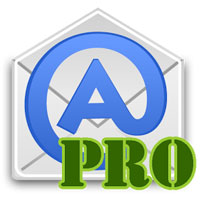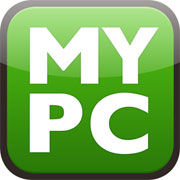
Hacking the Google TV Box Without Rooting It, Part 1
Day 2: Getting the Content
With the leaked Honeycomb 3.1 operating system installed, my Logitech Revue Google TV box was, for all intents and purposes, driving a giant Honeycomb tablet. The only problem was that there wasn’t really any nonsubscription, ad-supported content — none that I was interested in, anyway — on the box.
I found Amazon Instant Video pre-installed, as was CNBC Real Time, a business-oriented video stream with infographics like market closes and so on, and YouTube. There was no Hulu and no Slingplayer.
Rain Dance
I explored the pre-installed material, mainly because I was hoping the box would miraculously sync with my other Google products — like my phone, for example, with its many TV apps. I was otherwise stumped as to how to get any other apps onto the box and was killing time messing with the thing while hoping for a blinding moment of insight.
I was surprised to discover that most of the pre-installed apps were, in fact, simply links to websites. In the case of CNN, Crackle and more, they were simply links to Google TV optimized websites that were explored with the box’s included Chrome browser.
The Amazon Instant Video wasn’t even optimized for Google TV. It looked to me like the same website you’d go to on a PC with any standard browser. But why not? It all worked fine. Did we even need apps?
Getting the News
While I was performing this rain dance, I heard the sad news that there had been an earthquake in Eastern Turkey — hundreds were missing. This unfortunate event gave me an opportunity to get a handle on how well the box would handle a mix of text-based news and video.
The USA Today app (in fact a link) provided a superb mix of video and text. I could watch a snippet on the recovery effort and read context relating to the region’s background at almost the same time.
The video window obliterated most of the text, for some reason. But I got the idea as to the possibilities with this product.
Getting Apps
The personal cross-device file sharing app Dropbox turned out to be my app-transferring salvation. The Android Market, now on the upgraded Honeycomb box, was pretty useless, with almost nothing media-related indexed. The final release of the SDK has just been launched, and I’m hoping this sorry state of affairs will change rapidly.
I set up a Dropbox account, installed the Dropbox app on all of my devices, then uploaded the apk application files to Dropbox from the rooted devices with Root Explorer as the file browser. I then was able to download the files from Dropbox using my Dropbox account on the Revue’s Chrome browser.
Installation was simply a matter of selecting the appropriate apk file from the existing Downloads folder on the Revue.
Pre-Honeycomb streaming app Slingplayer, staple BBC News, broadcaster MSNBC, and video podcast app Mediafly all failed to load properly, or at all, despite my installation of the Orientation Switch that eve79nj had recommended in a GTVHacker forum post. Orientation Switch fixes the issue when a portrait-designed app won’t install on a landscape-oriented display — in this case the Revue box attached to the TV.
I was pretty much back to square one. Working well were video podcasts, the excellent lean-back version of YouTube, and flash video from websites that I was linking to from the Chrome browser. Messing with the User Agent settings within the browser hadn’t delivered to me any Hulu content. I already knew from anecdotal reports that Netflix wouldn’t work with Honeycomb on the Revue, although it works with the original Revue.
In Pursuit of Hulu
Play On, a media server solution, looked like my only hope of getting Hulu onto the Revue box. I had been avoiding this as a solution because it didn’t really fit into my model of cutting out all monthly subscriptions such as cable TV or paid Hulu Plus, and going Internet native-ad supported a la carte viewing only.
Play On costs US$4.99 a month, but there’s a one-time $79.99 life of product license that I could conceivably justify as a capital, one-off expense, similar to the Benji on the outright box purchase. This convoluted form of accountancy manipulation gave me the excuse to try the Play On two-week trial.
Play On kind of worked! After loading the Play On streamer software onto a networked PC, I was able to stream the legitimate Hulu feed from the PC (presumably allowed under Hulu’s license) to the Google TV box in perfect fidelity, testing a USA Network show. I now had Hulu on the Google box.
Testing a CBS show from the CBS website via Play On was jerky, though — however, this may have been a PC CPU issue.
Fish and Fire
One surprise app find for my new mega tablet was GTVHacker elsewhat’s Current Wallpaper app. Once installed from the Honeycomb-included Market, it allowed me to visualize common screen savers.
I was able to turn my TV into a 37-inch aquarium with Kittenface Software’s Aquarium Live Wallpaper app, and a fireplace with Brian Clug’s Classy Fireplace app. I hope Clug’s use of the adjective “Classy” in his title was a joke though.
Surprise Game
Surprise No. 2 was games. While I was loading TV apps off my phone and tablet onto the Revue I copied over “Drag Racing,” a free game that had previously absorbed me on the tablet.
The app copied over perfectly, and I now had the equivalent of a console game — a very playable phone-based game transposed to 37-inch TV.
Google Reader
After a while, I turned to Google’s Reader app that I had copied over from my phone. The Revue’s native podcast app and Chrome were working well, so would I not be able to use a set of RSS video link feeds to supply my content?
Indeed, test feeds of MSNBC, BBC and The Guardian provided a successful lean-back stream of a la carte news video content. This may be the way I was going to be using my Revue down the line.
Am I getting my laptop back? Well, no — it’s still hooked up to the TV and will be until I can get a Slingbox stream onto the Revue.




















































